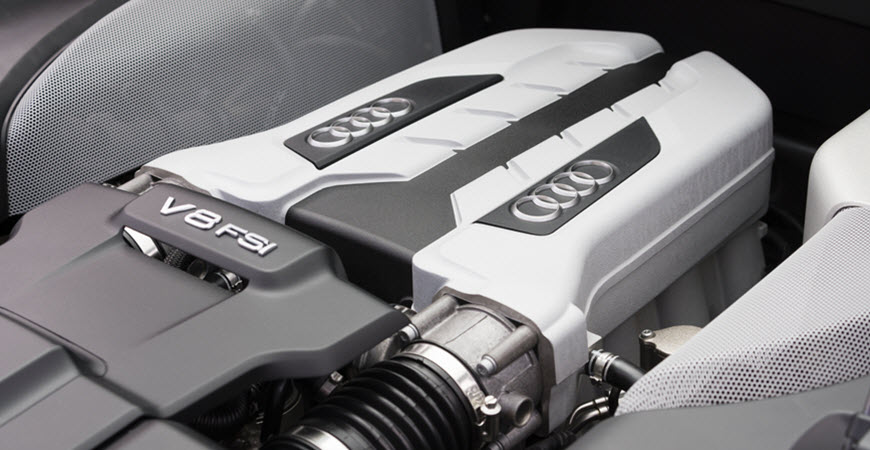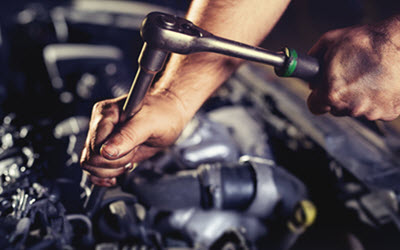- June 9, 2022
- By Cerebro Marketing
- In Audi Repair, Auto Info
- Tags Audi Engine Valve Types, Audi Engine Valves, Audi Engine Valves Groups, Audi Exhaust Valves, Audi Intake Valves, Valve Movement in Audi Engines
- 415
- 0

Audi is a European automotive brand known for its high-performance and superior vehicles over the years. You will enjoy your ride for a long time without any problems as the brand has a well-built engine and long-lasting parts.
Audis have a variety of components that serve different purposes. However, one of the important operations of your Audi is that it needs to transfer fluid from one component to another. So, let’s take a closer look at how your Audi manages to do that!
A device must be in place to allow or limit the flow of gas or fluid into and out of combustion chambers or cylinders during engine operation. Engine valves, one of the major mechanical components of internal combustion engines, are the engine’s methods of achieving this. These flow control valves are used for the same purpose as many other types of flow control valves.
The rocker arm is also a component of the engine, which has to be opened and closed in the right order at the right time. The rocker arm communicates with the valves as they open and close.
Almost all fuel-powered combustion engines can be classified as having valves (e.g., gasoline, kerosene, diesel, LNG, LP). Valve placement is one of the key factors for engine type classification since valve placement is what determines whether an engine is Over Head Cam (OHC), Valve in Block (VIB), or Over Head Valve (OHV).
Let’s take a look at engine valves in more detail.
Engine valves are equipped with conical profile valves that are fitted over a machinable valve seat to seal the paths for fluid or gas exchange. When the engine is in motion, the valves are constantly jumping up and down.
In order to operate a valve, one has to disassemble it into two parts: the stem and the head. As a valve seat is machined into the valve head, a fillet in the valve head guides the process. The valve spring acts as a sitting pressure against which the valve stem must move. The mechanical parts of the engine apply a force to the valve stem that enables it to move against the pressure that fits into the seat of the valve. The valve stem connects the mechanical pieces to the valve.
Engine valves can be classified into two groups based on the role they play in engine operation. We call these intake valves and exhaust valves.
Air and fuel mixture must be allowed to enter the engine cylinders in order for them to be compressed and ignited. For this to happen, the intake valves must be opened. Additionally, the exhaust valve must be opened in order for the exhaust gases to be released following the combustion process, which is initiated by the ignition of the fuel.
Engine camshafts are the mechanical devices that drive the valves of an engine. When the camshaft rotates, there are a set of lobes or cams located in the camshaft that generate the linear motion of the valve.
Keeping the valves in good condition requires a suitable clearance between the valve stem and the rocker arm or cam. Large valve clearances cause the valves to open slowly and close quickly. Too little valve clearance leads to partial valve closing, which reduces engine efficiency and increases noise.
Engine valves perform their main functions under considerable stress and at extremely high temperatures. In order to withstand this temperature and stress, valve materials must be able to withstand thermal and mechanical loads.
Intake valves are generally constructed of nickel, chrome, or tungsten steel, whereas exhaust valves are mostly made of high heat resistant metals like nichrome, cobalt-chromium, and silicon-chromium alloys.
Some of the most common engine valve designs and materials are as follows:
Engine valves are important for the operation of your  engine and they have to be properly maintained or replaced. You can visit us at Paladin Automotive to fix any issues with your Audi. We have our shop in Las Vegas and we serve drivers from Spring Valley, and Summerlin, NV. Call us now or book an appointment with our experts.
engine and they have to be properly maintained or replaced. You can visit us at Paladin Automotive to fix any issues with your Audi. We have our shop in Las Vegas and we serve drivers from Spring Valley, and Summerlin, NV. Call us now or book an appointment with our experts.
* Audi V8 FSI Engine image credit goes to: ymgerman.


